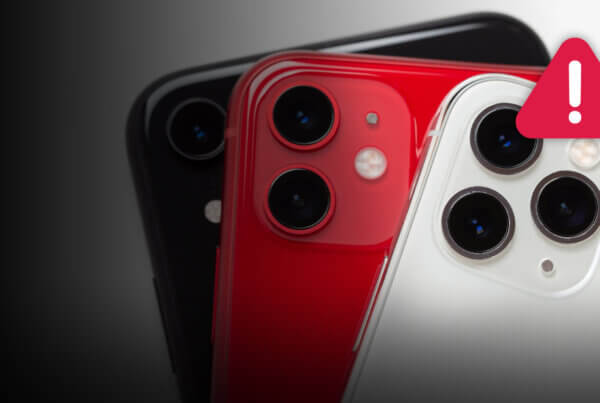One of the core values of the Kochava team is to invest in building a powerful and scalable platform. Platforms provide a foundation for innovation and the ability to scale elegantly whereas tools and solutions are designed for specific problems. This is one of the many reasons why top brands trust Kochava for measurement of every type of connected device from mobile and tvOS apps to bot and mobile web traffic.
Yesterday, Facebook announced a mechanism for brands to use bots to engage with 900 million users and Kochava customers are the only ones who can measure these engagements immediately. VentureBeat ran an article highlighting this capability. It is reprinted below for your convenience, or you can read at VentureBeat.com.
When the gold rush happens, selling shovels can be lucrative.
You could say that Kochava, a mobile attribution and measurement company, is one of the first to show up to sell shovels now that Facebook has set off a new kind of gold rush.
Facebook yesterday provided a way for brands to use chatbots as a new way to engage directly with the 900 million users of Facebook’s Messenger app. All kinds of brands are now madly setting up chatbots in hopes of nurturing customers, and driving business.
Less than 24 hours after Facebook announced the bot program details and the first list of brands building bots for the service (they include Walmart, eBay, 1-800-Flowers, etc), Kochava has stepped up to announce what it says is “comprehensive measurement support” for chatbots.
Ok, this chatbot thing is new, so it’s worth taking a step back to explain again what the heck chabots are, and why you need to measure their performance.
Chatbot is a wonky term for a pretty simple concept. Basically, instead of interacting with a friend over a messaging app, you’re messaging with a business. And that business can interact with you not only through simple text, but with images, links, and other prompts that allow you to buy things or do any number of tasks — all there in the message flow, without going to the business’ own app. Chatbot is the term for the technology used for, and it can be more or less sophisticated.
Just like brands need a way to measure the way users interact with their web site or mobile apps, brands need a way to measure activity with their bots.
And surprisingly, Facebook didn’t announce any in-house tool to do that.
So Kochava is the first to do this, filling an important void, VentureBeat has learned.
Take a hypothetical example. Let’s say you’re a Messenger user and you’ve opted into relationship with Lyft previously. Lyft can interact with you on Messenger and may, say, make a sponsored offer for a discounted ride. You can then engage with Lyft’s bot to order a ride, and Kochava can measure the activity for Lyft to report back how efficiently the campaign worked.
To start out with, brands won’t be able to hard-sell users with offers. Facebook said clearly yesterday that bots aren’t intended for ads or promotions for now. While Facebook said it is testing sponsored messages on “a small scale,” Facebook said it wants brand bot-makers to focus on “organic experiences” for the time being. Users can interact with a bot and click on a button to order a Lyft ride to launch the experience themselves. Also, Facebook has offered a plugin Lyft could use to show a Messenger button within Lyft’s own app, which users can click on to demonstrate an opted-in relationship.
Going forward, there will be more complexity. For example, Lyft may try to reach users through sponsored offers via other partners that already have a relationship with user within Messenger. Lyft will likely want to measure all of these interactions, to track and measure which partners are performing the best for them. And since a user technically never has to download the Lyft app, but may register with Lyft directly through a bot within Messenger, Lyft needs to measure this all outside of its main app.
But to be clear, even to begin with, brands can now run “Sponsored Messages” ad campaigns to customers who have voluntarily started a chatbot conversation with them, or they can buy so-called “Click to Message” News Feed ads to entice potential customers to start a conversation with their Chatbot. So you will see an ad in your News Feed that you can click on to be able to engage with the brand’s bot.
(If these nuances sound complicated, it’s because they are. Facebook is bending over backward to try to stop spam, but also provide ample ways for businesses to message customers if they have a preexisting relationship with them.)
Any company or developer that wants to build a bot can incorporate Kochava’s measurement of how an end user responds to their bot and when exactly the bot-maker is added to the user’s Messenger contact list. Developers can measure things like registration, transactions, or any other discrete activity through the bot interaction.
“Some brands need to measure engagement on a per user basis,” Kochava CEO Charles Manning told me a phone interview about his new offering.
Kochava has released documentation describing its support here. Manning said he is moving fast, and so will continue to update the documentation page throughout this afternoon. He said the documentation will also show examples of bot creation and measurement.
All of this will help brands track multi-touch attribution. Typically, brands have wanted to track users as they’ve gone from web to mobile. Well, now Kochava helps brands track a user as they move through bots as well.
Kochava’s architecture was built using “web hooks,” and it’s an architecture that translates well to the architecture being used around bots, Manning said. Kochava has the ability to let its clients — through server-to-server communication — hook into Kochava’s attribution engine through various end points, which are called web hooks.
Kochava has been an early user of bot service Slack, and eight months ago created the ability to have a Slack bot message when one of Kochava’s attribution reports was completed. From there, it was easy for Kochava to create a way for such a notification to be made on Facebook’s Messenger, Manning said.
Manning said the service will support other services beyond Messenger, including chat company Kik, which also recently released a bot store.
“As we explore how bots can interact with consumers, and brands begin to create chat-optimized ad campaigns at scale, Kochava is ready with a universal platform to track and measure interaction across multiple channels and devices, giving brands a truly comprehensive view of their customer’s engagement,” said Manning in a prepared release obtained by VentureBeat.
“Whether a consumer is interacting with a brand via an installed mobile app, a chatbot, mobile coupons, through desktop mobile web, or some alternate channel, Kochava is the universal measurement platform across all connected devices that brands can rely on to track, measure, and optimize that interaction.”






